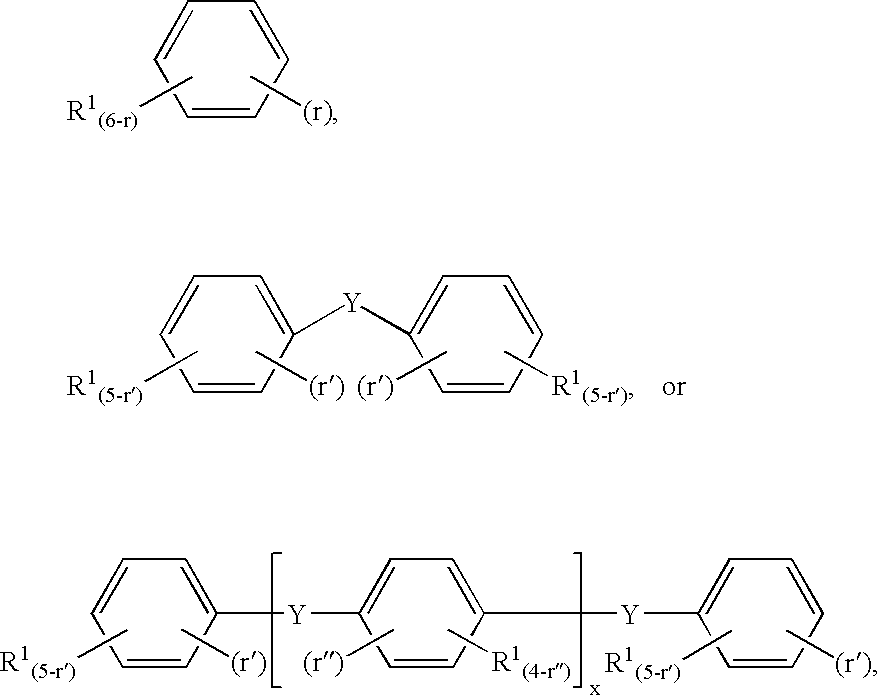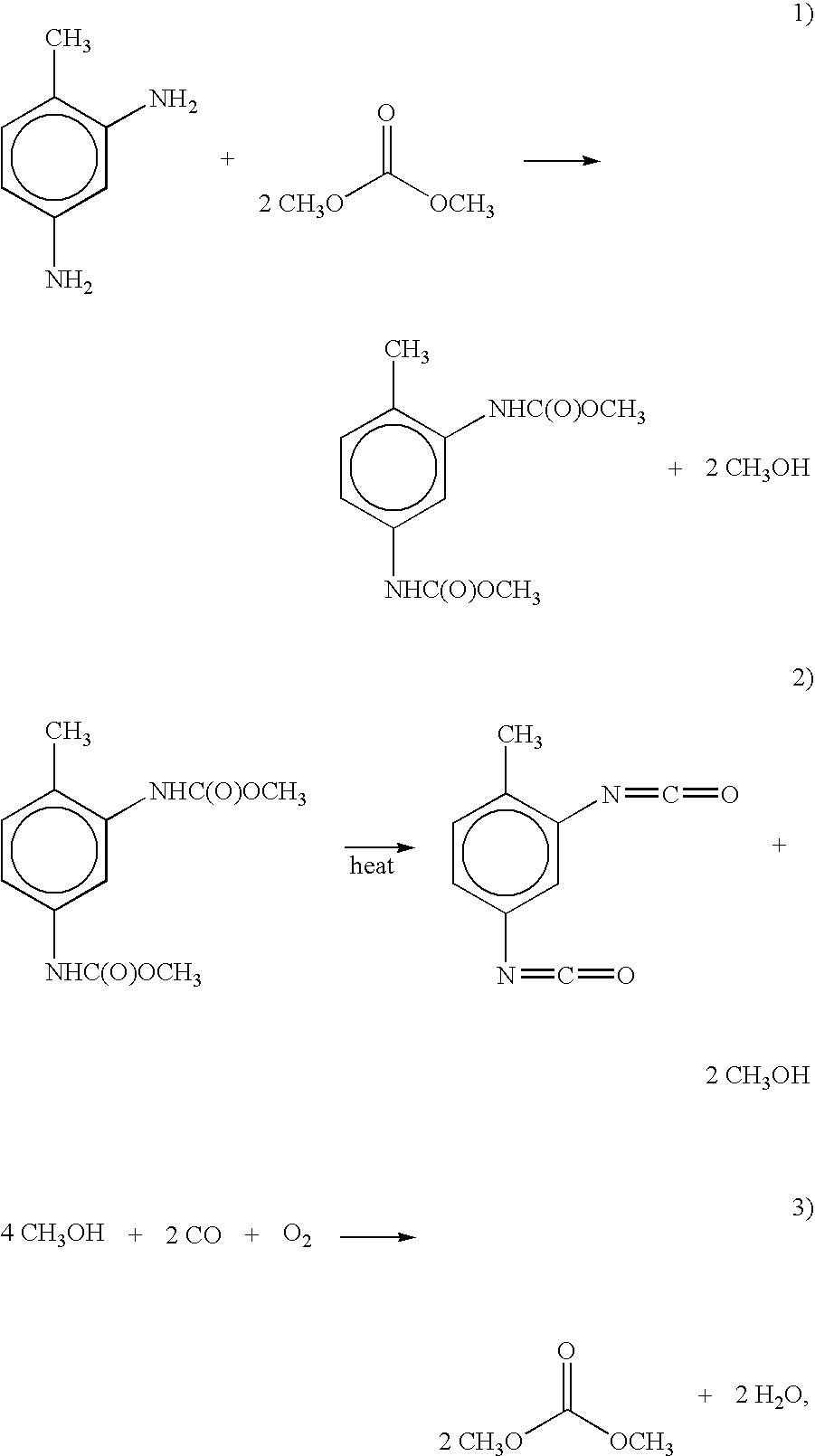Heterogeneous Supported Catalytic Carbamate Process
- Summary
- Abstract
- Description
- Claims
- Application Information
AI Technical Summary
Benefits of technology
Problems solved by technology
Method used
Image
Examples
specific embodiments
[0056]The following specific embodiments of the invention and combinations thereof are especially desirable and hereby delineated in order to provide detailed disclosure for the appended claims.
[0057]1. A process for the preparation of aromatic carbamates comprising contacting one or more organic carbonates with an aromatic amine or urea in the presence of a catalyst and recovering the resulting aromatic carbamate product, characterized in that the catalyst is a heterogeneous catalyst comprising a Group 12-15 metal compound supported on a substrate.
[0058]2. The process of embodiment 1 following the schematic formulas:
Ar(NRH)r+R′C(O)OAr(NRC(O)OR′)r+R′OH
Ar(NRC(O)NRR″)r+R′C(O)OAr(NRC(O)OR′)r+R″NRC(O)OR′,
[0059]wherein,
[0060]Ar is an aromatic or substituted aromatic group having a valency of r,
[0061]R independently each occurrence is hydrogen, alkyl, or aralkyl,
[0062]R′ independently each occurrence is alkyl or two R′ groups together are alkylene, and
[0063]R″ independently each occurrenc...
example 1
Aniline Conversion Using 10 Percent PbO on Alumina
[0093]Lead (II) nitrate (2.0 g) is dissolved in deionized water (25 mL) and added to 12.5 g of alumina. The catalyst is air dried at room temperature for 24 hours, then calcined at 500° C. in air for 4 hours, under which conditions the lead nitrate is converted to PbO.
[0094]The fixed bed reactor is loaded with 34 mL, 10.2 g of the above-prepared catalyst. A feed mixture of aniline (5 parts), tetrahydrofuran (THF) (50 parts) and dimethyl carbonate (DMC) (45 parts) is prepared. The reactor is heated to 180° C. with a pressure set point of 200 psig (1.5 MPa) and a feed rate of 0.5 mL / min. After 25 hours of operation the aniline conversion is 45 percent with 94 percent selectivity to methyl N-phenyl carbamate and phenyl isocyanate and 6 percent selectivity to N-methyl aniline.
example 2
TDA Conversion Using 30 Percent PbO on Alumina
[0095]A sample of alumina (10.0 g) is impregnated with lead (II) nitrate (6.9 g) dissolved in deionized water (20.0 g). The impregnated beads are dried in air overnight, heated at 150° C. for 3 hours and calcined at 500° C. for 16 hours in air. The catalyst (14.2 g, 35 mL) is loaded into the fixed bed reactor and heated to a temperature of 160° C. A mixture of 2.6 parts 2,4-toluene diamine (TDA), 40 parts THF, and 57.4 parts DMC is passed through the reactor at 0.5 mL / min., achieving an amine conversion of approximately 80 percent with 90 selectivity to the mono and dicarbamate products.
PUM
 Login to View More
Login to View More Abstract
Description
Claims
Application Information
 Login to View More
Login to View More - R&D
- Intellectual Property
- Life Sciences
- Materials
- Tech Scout
- Unparalleled Data Quality
- Higher Quality Content
- 60% Fewer Hallucinations
Browse by: Latest US Patents, China's latest patents, Technical Efficacy Thesaurus, Application Domain, Technology Topic, Popular Technical Reports.
© 2025 PatSnap. All rights reserved.Legal|Privacy policy|Modern Slavery Act Transparency Statement|Sitemap|About US| Contact US: help@patsnap.com



